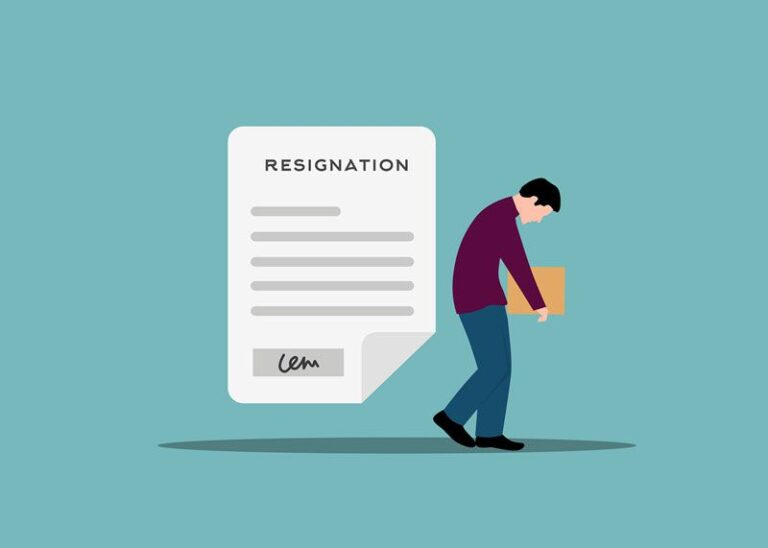
When a company starts laying people off, it rarely feels like progress. It’s emotional, unsettling, and often seen as failure. Yet, in business terms, layoffs can serve a hard but useful purpose — cutting unnecessary weight so the organization can stay alive and profitable.
Below is a clear, point-by-point look at how layoffs, when handled responsibly, can lift profits and reset a company’s financial balance.
1. Lower Payroll, Higher Margin
Wages and benefits make up a massive part of business costs.
When a company reduces its workforce, that entire section of recurring expenses shrinks overnight.
The savings can be used to pay off debt, reinvest in technology, or boost reserves — each of which directly improves profitability.
Even a 5–10% cut in labor costs can have a noticeable impact on the bottom line.
2. Leaner Operations Work Faster
As companies expand, they collect extra layers — duplicated roles, overlapping teams, slow approvals.
Layoffs act as a clean-up round. The remaining staff often end up with simpler structures, quicker decisions, and fewer delays.
Lean operations don’t just move faster; they also cost less to maintain, which keeps profits steady even in tight markets.
3. Attention Returns to What Pays Off
Layoffs usually begin where results are weakest — underperforming products, fading markets, or low-yield projects.
By shutting or trimming these areas, leadership redirects funds and focus to the parts of the business that actually generate revenue.
It’s a quiet but powerful form of strategy correction.
4. Keeping Pace With the Market
Markets evolve faster than org charts.
A company still hiring for yesterday’s needs risks running out of relevance.
Layoffs allow management to close outdated roles and open space for new skills and business lines — keeping profit linked to current demand rather than past habits.
5. Catalyst for Automation
When labor becomes expensive, the push for automation grows stronger.
Layoffs often encourage companies to adopt software or machinery that can handle repetitive work more cheaply and consistently.
Once the systems are set up, operating costs drop and profit margins widen — a shift that tends to last longer than the pain of downsizing.
6. Restoring Investor Trust
Public companies live under constant scrutiny.
A decision to cut staff, while unpopular, signals that management is serious about financial discipline.
For shareholders, that can restore confidence and sometimes lift the company’s stock price — at least in the short run.
7. Redirecting Cash to Growth Projects
Money saved from payroll cuts doesn’t vanish. It often finds new purpose in research, new product lines, or better marketing.
Those areas typically have higher potential returns, meaning that cost-cutting today can fuel revenue tomorrow.
8. Stronger Individual Accountability
A smaller team usually means clearer responsibility.
Everyone left knows their part matters. The excess layers that once hid inefficiency are gone.
That clarity often raises output per employee, helping the company earn more from fewer people.
9. Spending Culture Resets
Once layoffs happen, leaders usually re-examine other expenses too — suppliers, leases, travel, software.
That fresh look helps remove hidden waste. The result is a company that spends more consciously, even beyond salaries.
10. Flatter, Faster Organization
A trimmed workforce reduces management layers.
That means fewer meetings, quicker approvals, and less confusion about who decides what.
A flatter company can react to customers and market changes in days, not weeks — an advantage that often translates into profit.
11. Staying Competitive During Downturns
In recessions or slow markets, cash flow matters more than size.
Companies that cut costs early, including labor, often weather the storm while others collapse under expense pressure.
Survival itself becomes a form of profit, because it leaves room to capture market share once conditions improve.
12. Making Room for What’s Next
Sometimes, layoffs aren’t a reaction but preparation.
A business might shrink an old department to fund a new technology or service line.
That shift can lead to stronger, future-focused profits once the new division matures.
13. Cash Flow Becomes Healthier
Lower salary commitments mean less cash leaving the account every month.
That extra liquidity strengthens the company’s financial position and allows faster responses to opportunities — from bulk purchasing discounts to quick investments.
14. More Output from Less Waste
A lean company tends to know exactly what it’s paying for and why.
When overhead is down and efficiency is up, every sale contributes a larger slice to profit.
This “do more with less” approach isn’t just cost-cutting — it’s long-term financial hygiene.
15. Using Outsourcing as a Cushion
Instead of rehiring full-time employees for every role, many companies use contractors or agencies after layoffs.
This flexibility lets them adjust the workforce with demand, avoiding fixed costs while keeping operations running smoothly.
It’s a quieter way to protect profits in unpredictable markets.
Profit Isn’t Everything — But Stability Is
Layoffs can make a balance sheet look better, but they can also shake morale and public image.
That’s why the approach matters.
Companies that explain their reasons, offer fair severance, and show genuine respect often recover faster and rebuild stronger.
Profit, in this context, isn’t just about higher numbers — it’s about the ability to stay solvent, fund innovation, and survive future downturns.
Quick Recap
| Effect of Layoffs | How It Helps Profit |
|---|---|
| Reduced payroll costs | Immediate boost in margins |
| Streamlined structure | Faster, cheaper operations |
| Focused priorities | Better use of funds |
| Push for automation | Long-term cost control |
| Improved cash flow | Greater flexibility for growth |
Frequently Asked Questions
1. Do layoffs always make a company profitable?
Not necessarily. Layoffs help when they fix structural inefficiency. If they’re done just to please investors or without a clear plan, they can hurt morale and reduce performance.
2. Why do profitable companies still lay off staff?
Sometimes growth creates duplication or over-hiring. Even profitable firms cut staff to stay efficient and shift funds toward higher-return projects.
3. How do layoffs affect company culture?
They can create anxiety, but strong leadership and open communication help restore trust. A smaller, more focused team often emerges once things settle.
4. Are layoffs a long-term solution?
They solve cost issues quickly, but sustainable profit comes from innovation and smart reinvestment. Layoffs should be a reset, not a habit.
5. Can small businesses benefit from layoffs?
Yes — if they use the moment to rethink operations, automate, or outsource smartly. But the impact is sharper in small teams, so decisions must be measured.
Final Thought
Layoffs are one of the hardest choices a company can make.
But in business terms, they sometimes reset the equation between cost and value.
When carried out with care, transparency, and a plan for the future, layoffs can transform a heavy organization into a leaner, more profitable one — not by magic, but by focus.



